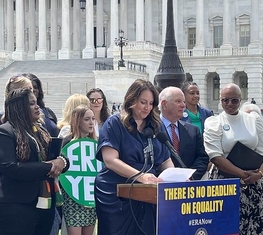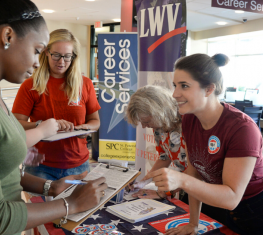10 Steps to Establishing a Fundraising Program
Start fundraising for your League with these ten steps.
Before you start planning for fundraising, listen to the fundraising training modules!
Individual Donors
Step 1: Develop a Contact Management database of your members, partners, supporters, volunteers, and donors. Keep it up to date. Record every donation and every appeal sent to donors. Focus on your most loyal (frequent) donors. Send them regular monthly updates on your work and voting rights issues facing your community.
Step 2: Make sure you have a visible “donate” button and donation links on your website. Send out a short monthly newsletter and include a donation link.
Step 3: Draft an end-of-year appeal to ask for donor support at the holidays.
Foundations
Step 4: Contact your community foundation and ask about funders that support democracy. Every community has a community foundation nearby or in their state.
Step 5: Go to Candid (the Foundation Center Online Directory) and research which foundations fund democracy programs in your state.
Step 6: The national League works with national foundations that support work across the country, so check in with the LWVUS development staff when you are contemplating work with a national foundation. In most cases, a national foundation will require activities at a national level, so it won’t be suitable for a state or local League.
Businesses & Corporations
Step 7: Check with your Board members, Chamber of Commerce, Rotary Club, or local business associations to identify the largest corporations or businesses in your community. Contact these businesses to identify if they would support your activities to empower voters.
Step 8: Review your donor database to identify any supporters or volunteers who may be business owners that could support or sponsor your activities or events, as appropriate.
Donor Advised Fund
Step 9: Research Donor Advised Funds and be sure to let donors know that you accept contributions from Donor Advised Funds such as Fidelity, Schwab, Vanguard, etc. You can also ask your community foundation about donor-advised funds, as many community foundations manage these funds.
Planned Gifts
Step 10: Research how you can accept gifts from a bequest and post the necessary language that individuals should include in their will on your website. See additional training modules here.
Additional Resources
- Direct Mail Fundraising FAQs | Frequently asked questions regarding direct mail fundraising and a direct marketing schedule for LWVUS/EF.
Note: The links contained on this page are provided as a convenience and for informational purposes only; they do not constitute an endorsement of any of these products or services.
Related Content
Frequently asked questions regarding direct mail fundraising and a direct marketing schedule for LWVUS/EF.
Learn how to fundraise for the League’s work with these fundraising training modules. These modules cover a variety of fundraising topics designed for new and experienced fundraisers. Following each module are easy-to-adapt LWV fundraising resources.
Learn about national giving trends, why people give to LWV, who typically give donations, and why the League is uniquely positioned to empower voters and defend democracy. In this module, you will learn how to write an effective email appeal.




